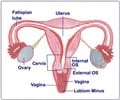Dr. Tracy Roberts, Professor of Health Economics at University of Birmingham and colleagues conducted a cost effectiveness analysis on four hypothetical cohorts of women with heavy menstrual bleeding. The comparable interventions were Mirena (levonorgestrel releasing intrauterine system), first or second generation endometrial ablation techniques, or hysterectomy.
Study reports focused on cost effectiveness based on incremental cost per quality adjusted life year (QALY).Dr. Roberts reported the results as hysterectomy to be the preferred intervention for heavy menstrual bleeding. Study researchers agreed that hysterectomy is more expensive but it does produces more QALYs relative to other remaining strategies and hence is likely to be considered cost effective. The incremental cost effectiveness ratio for hysterectomy compared with Mirena is $2350 (£1440, €1633) per additional quality adjusted life year (QALY). Furthermore, the incremental cost effectiveness ratio for hysterectomy compared with second generation ablation is £970 per additional quality adjusted life year (QALY).
She concluded by stating, “In light of the acceptable thresholds used by the National Institute for Health and Clinical Excellence, hysterectomy would be considered the preferred strategy for the treatment of heavy menstrual bleeding. The results concur with those of other studies but are highly sensitive to utility values used in the analysis.”
Reference Article
http://www.bmj.com/content/342/bmj.d2202.full
Source-Medindia












